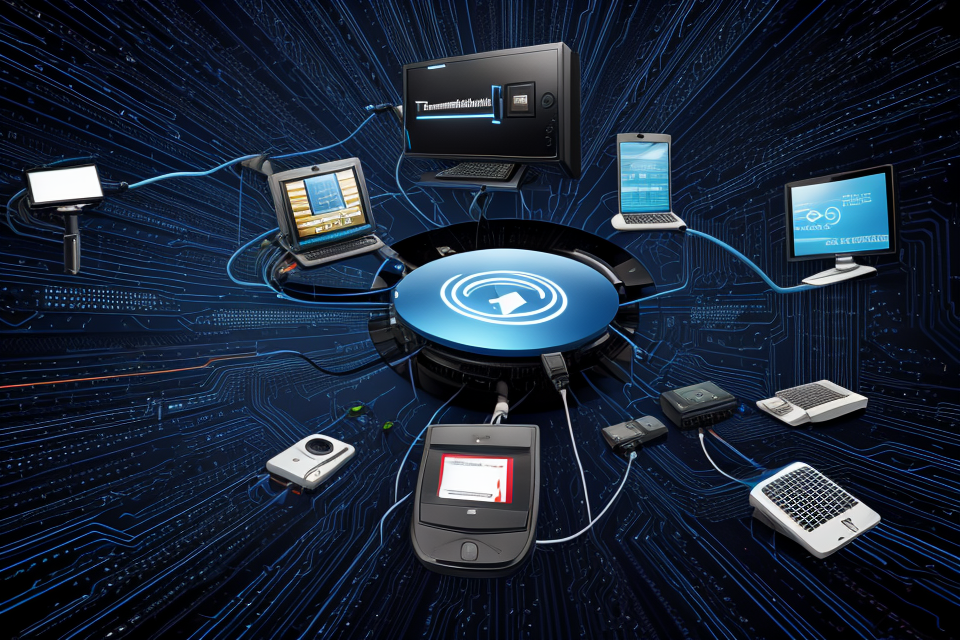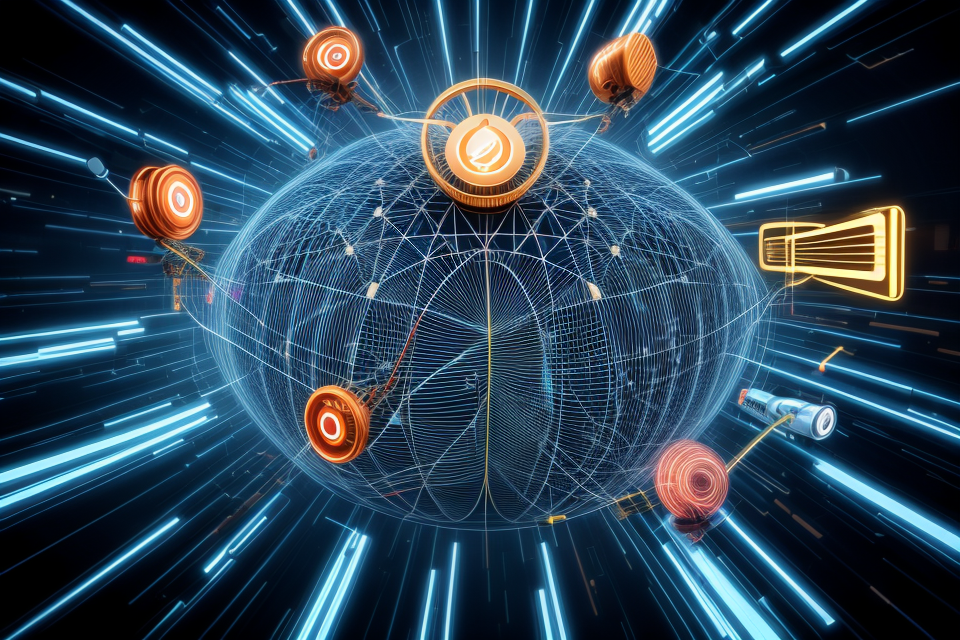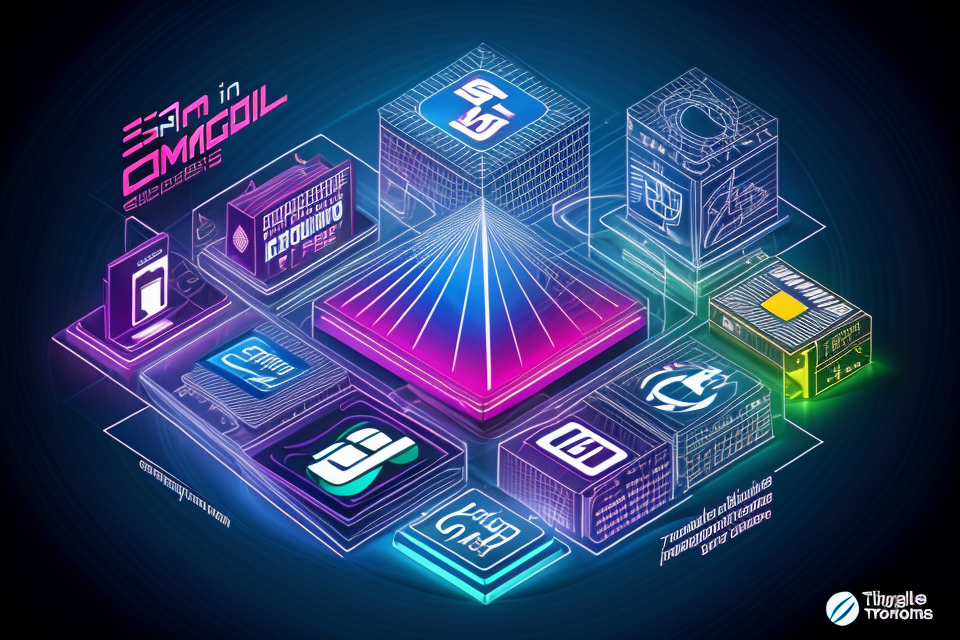
Telecommunication refers to the transmission of information over long distances through various forms of media, such as telephone, internet, television, and radio. It has revolutionized the way we communicate and has become an integral part of our daily lives. This guide will provide a comprehensive overview of telecommunication, including its history, types, and examples. Get ready to discover how telecommunication has transformed the world and made it a smaller place.
Understanding Telecommunication
Definition of Telecommunication
Telecommunication is the transmission of information, data, or signals over long distances through various forms of media. It is a method of communication that uses technology to facilitate the exchange of information between two or more individuals or entities. The term “telecommunication” is derived from the Greek words “tele” meaning “far away” and “communication” meaning “sharing of information”.
Key components of telecommunication
Telecommunication involves several key components, including:
Transmission media
Transmission media refers to the physical medium used to transmit information, such as copper wires, fiber optic cables, and wireless signals.
Signal
A signal is the representation of information, data, or instructions that are transmitted over a communication channel.
Noise
Noise refers to any unwanted interference or disturbance that can affect the quality of the signal during transmission.
Channel
A channel is a physical or virtual pathway through which information is transmitted. Channels can be either analog or digital.
Code
A code is a set of rules or symbols used to represent information or data during transmission. Codes can be either numeric or alphabetic.
Feedback
Feedback is the process of receiving information about the quality of the signal or message and using it to adjust the transmission. Feedback can be either positive or negative.
Types of Telecommunication
Telecommunication refers to the transmission of information and communication over long distances through various media. There are two main types of telecommunication: broadcasting and point-to-point communication.
Broadcasting
Broadcasting is the transmission of audio, video, or data signals to a large number of recipients simultaneously. There are two types of broadcasting: terrestrial broadcasting and satellite broadcasting.
Terrestrial broadcasting
Terrestrial broadcasting is the transmission of signals through the airwaves using radio waves, television signals, or digital signals. It is the most common type of broadcasting and is used for radio and television broadcasting. Terrestrial broadcasting can be either analog or digital.
Satellite broadcasting
Satellite broadcasting is the transmission of signals through space using satellites. It is used for broadcasting television and radio signals to remote areas where terrestrial broadcasting is not possible. Satellite broadcasting can be either analog or digital.
Point-to-Point Communication
Point-to-point communication is the transmission of information between two points directly. There are two types of point-to-point communication: wired communication and wireless communication.
Wired communication
Wired communication is the transmission of information through wires or cables. It is used for local area networks (LANs), wide area networks (WANs), and the internet. Wired communication is faster and more reliable than wireless communication.
Wireless communication
Wireless communication is the transmission of information through the airwaves using radio waves, microwaves, or infrared signals. It is used for mobile phones, Wi-Fi, Bluetooth, and other wireless technologies. Wireless communication is convenient and flexible but can be less secure and less reliable than wired communication.
Applications of Telecommunication
Telecommunication has revolutionized the way we communicate and access information. With the advancement of technology, there are numerous applications of telecommunication that have become an integral part of our daily lives. Here are some of the most common applications of telecommunication:
Telephone Networks
Telephone networks are one of the earliest and most widely used applications of telecommunication. The telephone network enables users to make voice calls and send messages over long distances. The network consists of a complex system of interconnected switches, routers, and transmission lines that allow data to be transmitted from one location to another.
Circuit switching
Circuit switching is a method of establishing a dedicated communication channel (or circuit) between two devices for the duration of the communication session. This method is commonly used in traditional telephone networks. In circuit switching, a physical connection is established between the two devices, and data is transmitted over this connection.
Packet switching
Packet switching is a method of transmitting data in small units called packets. Each packet contains a piece of data and a destination address. The packets are sent over the network one at a time, and each packet may follow a different path to its destination. This method is commonly used in modern telephone networks.
Internet
The Internet is a global network of interconnected computers that enables users to access a vast array of information and communicate with each other. The Internet is based on packet switching technology and is accessible through various devices such as computers, smartphones, and tablets.
World Wide Web
The World Wide Web (WWW) is a system of interconnected hypertext documents that are accessed through the Internet. The Web is a powerful tool for accessing information and communicating with others. It contains a vast array of resources such as websites, blogs, and social media platforms.
Email is a popular application of telecommunication that enables users to send and receive messages over the Internet. Emails can be sent to one or more recipients and can include attachments such as documents, images, and videos.
Video conferencing
Video conferencing is a real-time communication tool that enables users to conduct meetings, interviews, and other forms of communication over the Internet. Video conferencing applications use telecommunication technology to transmit audio and video data between multiple locations.
Overall, telecommunication has transformed the way we communicate and access information. From telephone networks to the Internet, there are numerous applications of telecommunication that have become an integral part of our daily lives.
Telecommunication Examples
Historical Examples
Telegraph
Overview
The telegraph was the first means of long-distance communication and was invented by Samuel Morse in 1837. It was a device that used electricity to transmit messages over long distances. The telegraph was a revolutionary invention at the time and played a crucial role in shaping the future of telecommunications.
Advantages
The telegraph had several advantages over its predecessors. It was much faster than sending messages by horseback or ship, which took days or even weeks. The telegraph allowed messages to be sent over long distances in a matter of hours, which was a significant improvement. The telegraph also allowed for the instant transmission of news and information, which helped to create a sense of global connectedness.
Limitations
Despite its advantages, the telegraph had several limitations. It was expensive to build and maintain, and the infrastructure required a significant investment. The telegraph also had limited capacity, which meant that it could only transmit a limited amount of information at a time. The telegraph was also vulnerable to interference and tampering, which could lead to messages being lost or misinterpreted.
Telephone
The telephone was invented by Alexander Graham Bell in 1876 and was the first device to allow people to communicate over long distances via voice. The telephone revolutionized the way people communicated and created a new era of telecommunications.
The telephone had several advantages over its predecessors. It allowed people to communicate in real-time, which was a significant improvement over the telegraph. The telephone also allowed people to communicate over long distances, which was not possible with previous technologies. The telephone also allowed for the creation of new businesses and industries, such as telephone companies and call centers.
Despite its advantages, the telephone had several limitations. It was expensive to install and maintain, and the infrastructure required a significant investment. The telephone also had limited capacity, which meant that it could only transmit a limited amount of information at a time. The telephone was also vulnerable to interference and tampering, which could lead to calls being lost or misinterpreted.
Fax
The fax machine was invented by Alexander Bain in 1843 and was the first device to allow for the transmission of images over long distances. The fax machine revolutionized the way people communicated and created a new era of telecommunications.
The fax machine had several advantages over its predecessors. It allowed people to transmit images and documents over long distances, which was not possible with previous technologies. The fax machine also allowed for the creation of new businesses and industries, such as fax services and document delivery companies.
Despite its advantages, the fax machine had several limitations. It was expensive to install and maintain, and the infrastructure required a significant investment. The fax machine also had limited capacity, which meant that it could only transmit a limited amount of information at a time. The fax machine was also vulnerable to interference and tampering, which could lead to documents being lost or misinterpreted.
Modern Examples
Mobile Networks
Mobile networks refer to the system of telecommunications that enable wireless communication through mobile devices such as smartphones, tablets, and other handheld devices. These networks provide access to voice calls, text messaging, internet browsing, and multimedia services while users are on the move.
Mobile networks offer several advantages over traditional wired networks, including:
- Mobility: Users can access the network from anywhere within the coverage area, without being restricted to a fixed location.
- Flexibility: Mobile devices can be used for various purposes, including work, entertainment, and communication, making them versatile and convenient.
- Connectivity: Mobile networks provide seamless connectivity to the internet, enabling users to access a wide range of online services and applications.
Despite their benefits, mobile networks also have some limitations, including:
- Network Coverage: The quality and availability of mobile network coverage can vary depending on the location, resulting in poor signal strength or dropped calls in some areas.
- Bandwidth Limitations: Mobile networks have limited bandwidth compared to wired networks, which can result in slower data transfer rates and lower quality video streaming.
- Security Concerns: Mobile networks are more vulnerable to security threats such as hacking, eavesdropping, and viruses due to their wireless nature.
Internet of Things (IoT)
The Internet of Things (IoT) refers to the interconnection of various physical devices, appliances, and systems through the internet, enabling them to exchange data and interact with each other. This technology has transformed the way we live, work, and communicate, and it has numerous applications in various industries, including healthcare, transportation, and agriculture.
The IoT offers several advantages, including:
- Automation: IoT devices can be programmed to perform specific tasks automatically, reducing the need for human intervention and improving efficiency.
- Remote Monitoring: IoT devices can be monitored remotely, enabling users to keep track of their operations and performance from anywhere.
- Cost Savings: IoT devices can help businesses and individuals save money by reducing energy consumption, improving inventory management, and increasing productivity.
Despite its benefits, the IoT also has some limitations, including:
- Security Risks: IoT devices are vulnerable to cyber-attacks, which can compromise the privacy and security of the data they collect and transmit.
- Interoperability Issues: IoT devices from different manufacturers may not be compatible with each other, making it difficult to integrate them into a single system.
- Privacy Concerns: IoT devices can collect sensitive personal data, raising concerns about privacy and data protection.
Cloud Computing
Cloud computing refers to the delivery of computing services, including storage, processing power, and software applications, over the internet. Instead of storing data on local servers or personal computers, users can access these services through remote servers maintained by third-party providers.
Cloud computing offers several advantages, including:
- Scalability: Cloud computing services can be easily scaled up or down depending on the user’s needs, providing flexibility and cost-effectiveness.
- Accessibility: Cloud computing services can be accessed from anywhere with an internet connection, making it convenient for remote work and collaboration.
- Cost Savings: Cloud computing eliminates the need for expensive hardware and software purchases, reducing costs and increasing efficiency.
Despite its benefits, cloud computing also has some limitations, including:
- Dependence on Internet Connectivity: Cloud computing services require a stable internet connection to access data and applications, making it unsuitable for areas with poor connectivity.
- Security Risks: Cloud computing services can be vulnerable to cyber-attacks, data breaches, and other security threats, which can compromise the privacy and security of user data.
- Data Loss: Cloud computing services can result in data loss if not managed properly, which can lead to data
Telecommunication Trends and Future Developments
Emerging Technologies
5G Networks
5G networks represent the latest advancement in telecommunication technology, promising faster data speeds, lower latency, and increased network capacity. This new standard offers a variety of benefits, including:
- Faster Data Speeds: 5G networks can provide data transfer rates of up to 20 Gbps, which is a significant improvement over previous generations. This increased speed enables faster downloads, smoother video streaming, and more efficient data transmission.
- Lower Latency: With 5G, the delay in data transmission is reduced to as low as 1 ms, which is crucial for real-time applications like remote surgery, autonomous vehicles, and augmented reality.
- Increased Network Capacity: 5G networks are designed to handle a much larger number of devices compared to previous generations. This increased capacity will accommodate the growing number of IoT devices and support the expansion of smart cities.
However, there are also some limitations to 5G networks:
- Limited Coverage: 5G networks are still being rolled out, and coverage is currently limited in many areas. This means that 5G may not be available in some regions, limiting its immediate impact.
- Interference with Previous Standards: 5G operates on a different frequency band than previous generations, which can lead to interference with 4G and 3G networks. This may cause connectivity issues for users in areas with limited 5G coverage.
Quantum Communication
Quantum communication represents a new frontier in telecommunication, utilizing the principles of quantum mechanics to enable secure and efficient data transmission. Some of the key advantages of quantum communication include:
- Unbreakable Security: Quantum key distribution (QKD) is a secure method of sharing cryptographic keys that cannot be intercepted or tampered with. This makes it ideal for sensitive data transmission, such as financial transactions or classified government communications.
- Faster Data Transmission: Quantum communication can enable faster data transmission by allowing multiple bits of information to be transmitted simultaneously using quantum entanglement. This has the potential to significantly increase data transfer rates.
However, there are also some limitations to quantum communication:
- Limited Distance: Quantum communication is currently limited to short distances, typically up to a few hundred kilometers. This is due to the fragility of quantum states, which can be easily disrupted by environmental factors.
- High Costs: Quantum communication technology is still in its early stages, and the cost of implementing it is currently quite high. This limits its practical applications at this time.
Space Communication
Space communication refers to the use of satellites and other space-based technologies to facilitate telecommunication. This includes both traditional satellite television and radio broadcasting, as well as emerging technologies like satellite-based internet. Some of the key advantages of space communication include:
- Global Coverage: Space-based communication can provide coverage to remote and inaccessible areas, enabling communication in regions where other forms of telecommunication are not available.
- High Capacity: Satellites can support a large number of users and provide high-speed internet access to remote areas.
However, there are also some limitations to space communication:
- Latency: Communication via satellite incurs a delay due to the time it takes for signals to travel to and from the satellite. This can result in noticeable lag during real-time applications like video conferencing or online gaming.
- Cost: Space-based communication infrastructure is expensive to develop and maintain, which can make it cost-prohibitive for some applications.
Challenges and Concerns
Cybersecurity
The rapid advancement of telecommunication technology has also led to increased concerns over cybersecurity. As more and more data is transmitted over digital networks, the risk of cyber-attacks and data breaches grows. The most common types of cyber threats to telecommunication include:
- Malware: Malware is a type of software designed to disrupt, damage, or gain unauthorized access to a computer system.
- Phishing: Phishing is a type of cyber attack where attackers use fraudulent emails or websites to trick people into giving away sensitive information.
- Denial of Service (DoS) attacks: A DoS attack is when an attacker floods a network or website with traffic in order to make it unavailable to users.
To mitigate these threats, telecommunication companies and organizations must implement strong security measures such as firewalls, encryption, and intrusion detection systems.
Privacy and Data Protection
The growth of telecommunication has also brought up concerns about privacy and data protection. With the increasing amount of personal data being transmitted over digital networks, there is a risk that this information could be intercepted or accessed by unauthorized parties. This can lead to serious consequences such as identity theft or financial fraud.
To address these concerns, governments and organizations have implemented regulations and policies to protect the privacy of individuals. For example, the European Union’s General Data Protection Regulation (GDPR) sets strict rules for the collection, storage, and use of personal data.
Environmental Impact
The telecommunication industry also has a significant environmental impact. The production and disposal of electronic devices, as well as the energy consumption of data centers and networks, contribute to greenhouse gas emissions and electronic waste.
To mitigate the environmental impact of telecommunication, companies and organizations must implement sustainable practices such as using renewable energy sources, reducing e-waste, and improving the energy efficiency of their networks and devices.
FAQs
1. What is telecommunication?
Telecommunication refers to the transmission of information over long distances through various forms of media, such as wire, cable, fiber optics, or through the air using radio or satellite transmissions. It allows people to communicate with each other over vast distances and facilitates the exchange of information, entertainment, and other services.
2. What are some examples of telecommunication?
Examples of telecommunication include telephone calls, mobile phone calls, email, text messaging, video conferencing, internet access, and television broadcasting. Other examples include satellite communication, radio communication, and fiber-optic communication.
3. How does telecommunication work?
Telecommunication works by using various technologies to transmit information over long distances. For example, telephone calls are transmitted over dedicated phone lines or through cellular networks, while email and text messages are transmitted over the internet. Television broadcasts are transmitted over the airwaves or through cable or satellite systems.
4. What are the benefits of telecommunication?
The benefits of telecommunication are numerous. It allows people to communicate with each other instantly, regardless of their location. It also facilitates the exchange of information and ideas, and allows people to access a wide range of entertainment and other services. Additionally, telecommunication has revolutionized business by allowing companies to communicate and collaborate with each other on a global scale.
5. What are some of the challenges associated with telecommunication?
Some of the challenges associated with telecommunication include the need for expensive infrastructure, security concerns, and the potential for misuse or abuse. Additionally, telecommunication can be disrupted by natural disasters or other events, which can result in service outages or other issues.
6. What is the future of telecommunication?
The future of telecommunication is likely to involve the continued development and expansion of existing technologies, as well as the emergence of new ones. This may include the use of new forms of media, such as 5G networks, or the development of new applications and services. Additionally, advances in artificial intelligence and other fields may lead to new ways of using telecommunication to enhance our lives and businesses.


